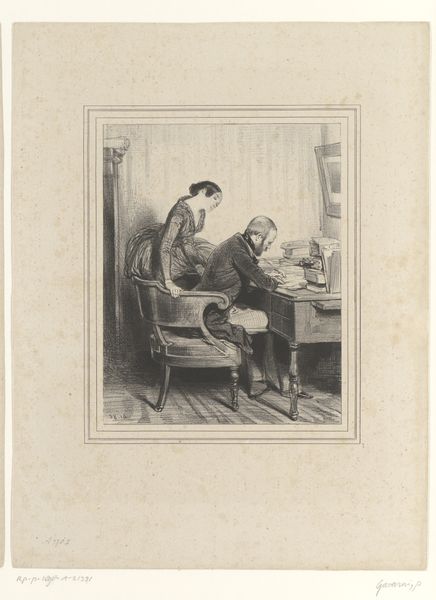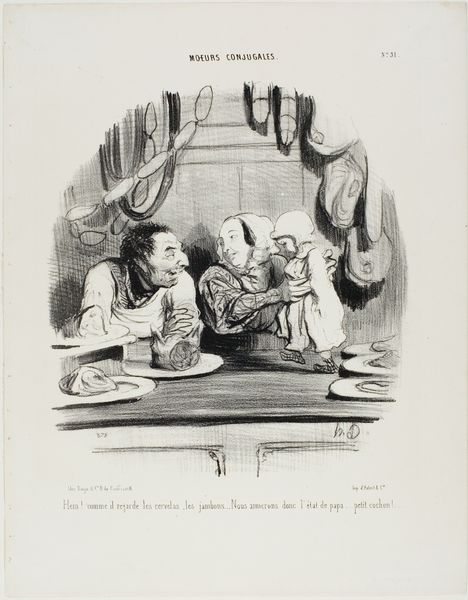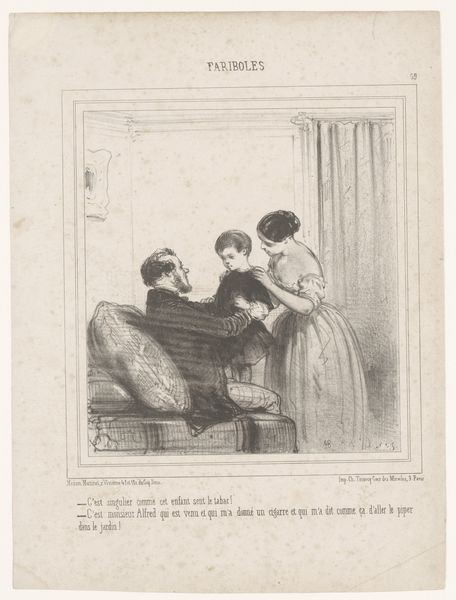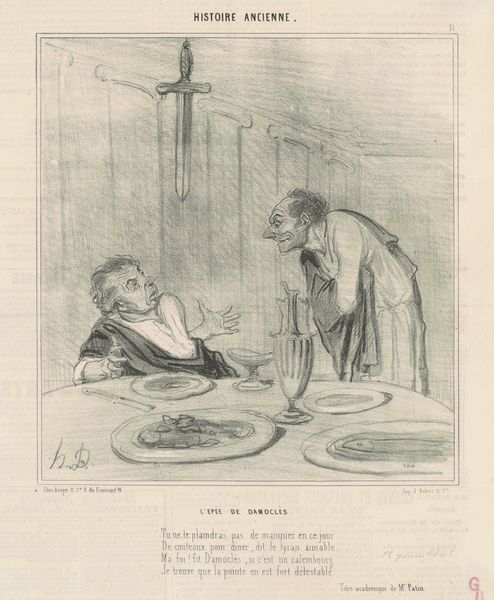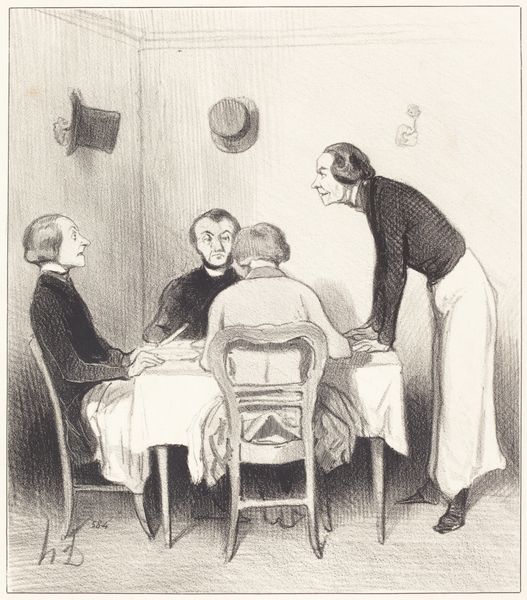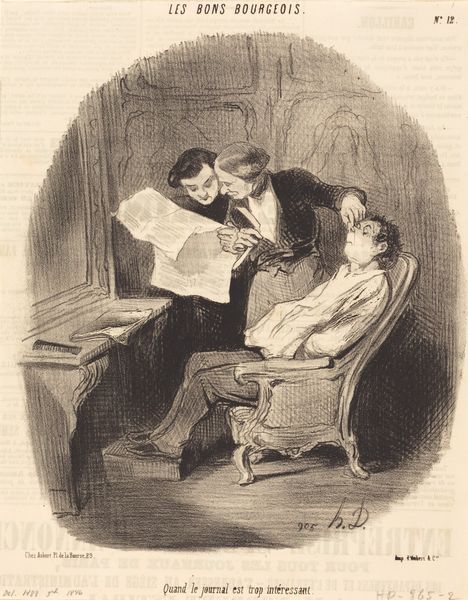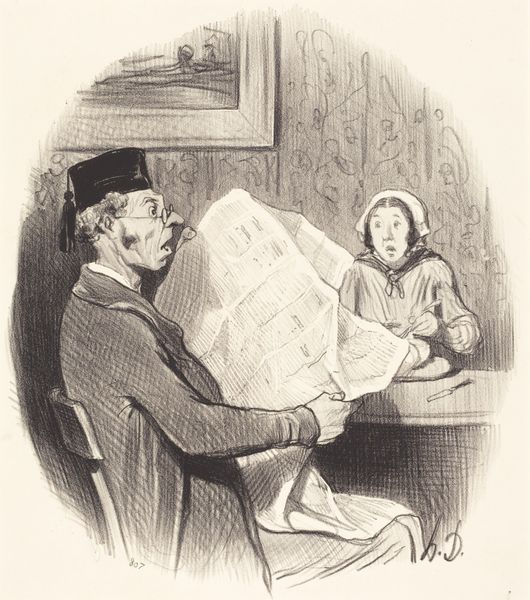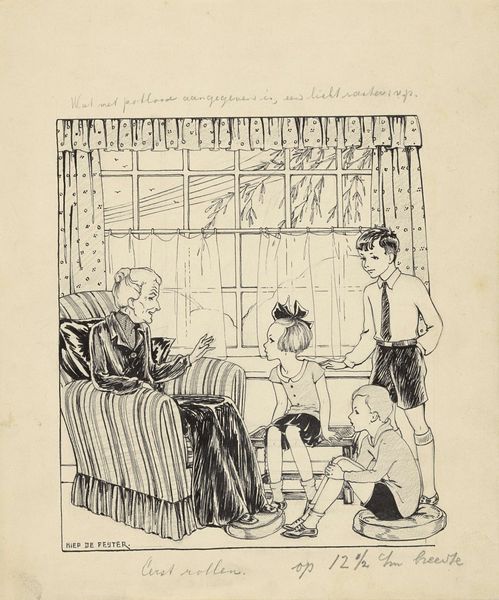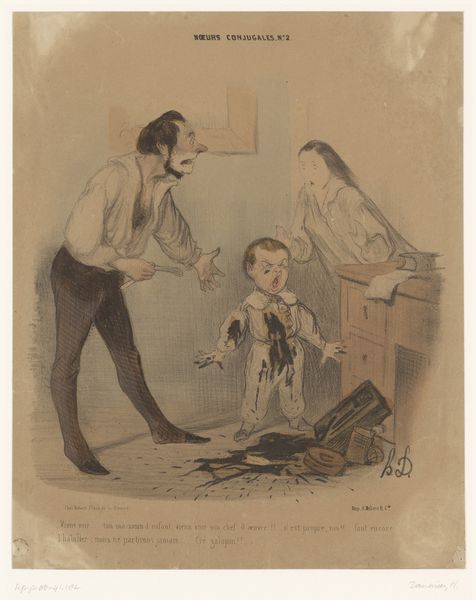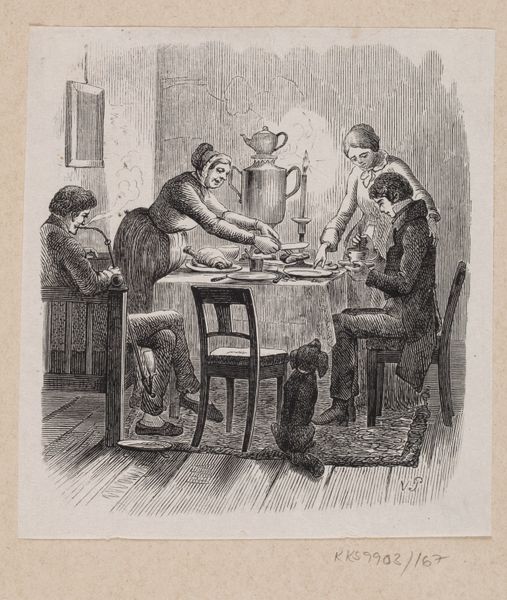
drawing, lithograph, print, paper, pencil, pen
#
portrait
#
drawing
#
lithograph
# print
#
caricature
#
pencil sketch
#
figuration
#
paper
#
romanticism
#
pencil
#
pen
#
genre-painting
#
modernism
#
realism
Dimensions: height 363 mm, width 237 mm
Copyright: Rijks Museum: Open Domain
Editor: This lithograph, "Man reading at the table during dinner", was created by Honoré Daumier in 1842. The scene feels surprisingly modern – a kind of detached intimacy at the dinner table. What catches your eye in this piece? Curator: Immediately, I’m drawn to the depiction of social customs and power dynamics embedded within this seemingly mundane domestic scene. Considering the era, the piece acts as social commentary, doesn't it? Editor: How so? Curator: Notice how the man is completely absorbed in his reading, seemingly oblivious to his wife. Think about the social expectations of men and women in 19th-century France. Whose interests are valued here? Where is she "placed"? How does Daumier, through this lithograph, participate in the public conversation about marriage? Editor: I see what you mean. It’s not just a portrait, it's also a political statement. It raises questions about whose voice matters and what spaces are deemed "male" and "female." Curator: Precisely. And consider the medium - lithography. It allowed Daumier to circulate these critiques widely through print culture. It becomes accessible, part of a larger discourse. Do you think that was his purpose? Editor: Probably. The print makes it a readily distributed statement instead of a unique work of art. This definitely shifts my understanding. It's not just about the individual, but also about how art participates in broader cultural conversations. Curator: Exactly! And it shows how artistic choices, even in seemingly simple scenes, reflect and shape social perceptions. Editor: Thanks, that was fascinating. I'll definitely look at Daumier's work – and 19th-century art – with a new perspective now!
Comments
No comments
Be the first to comment and join the conversation on the ultimate creative platform.
